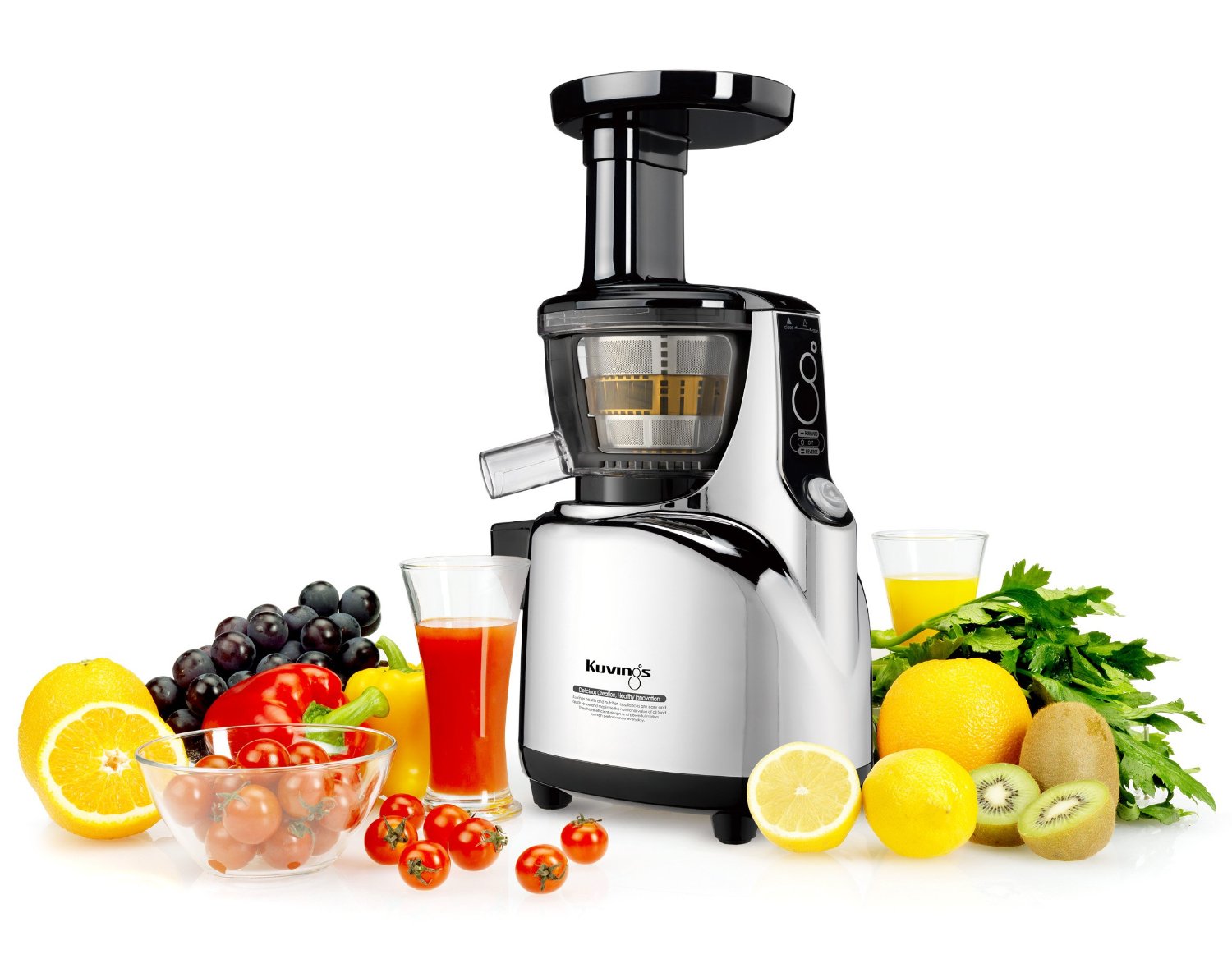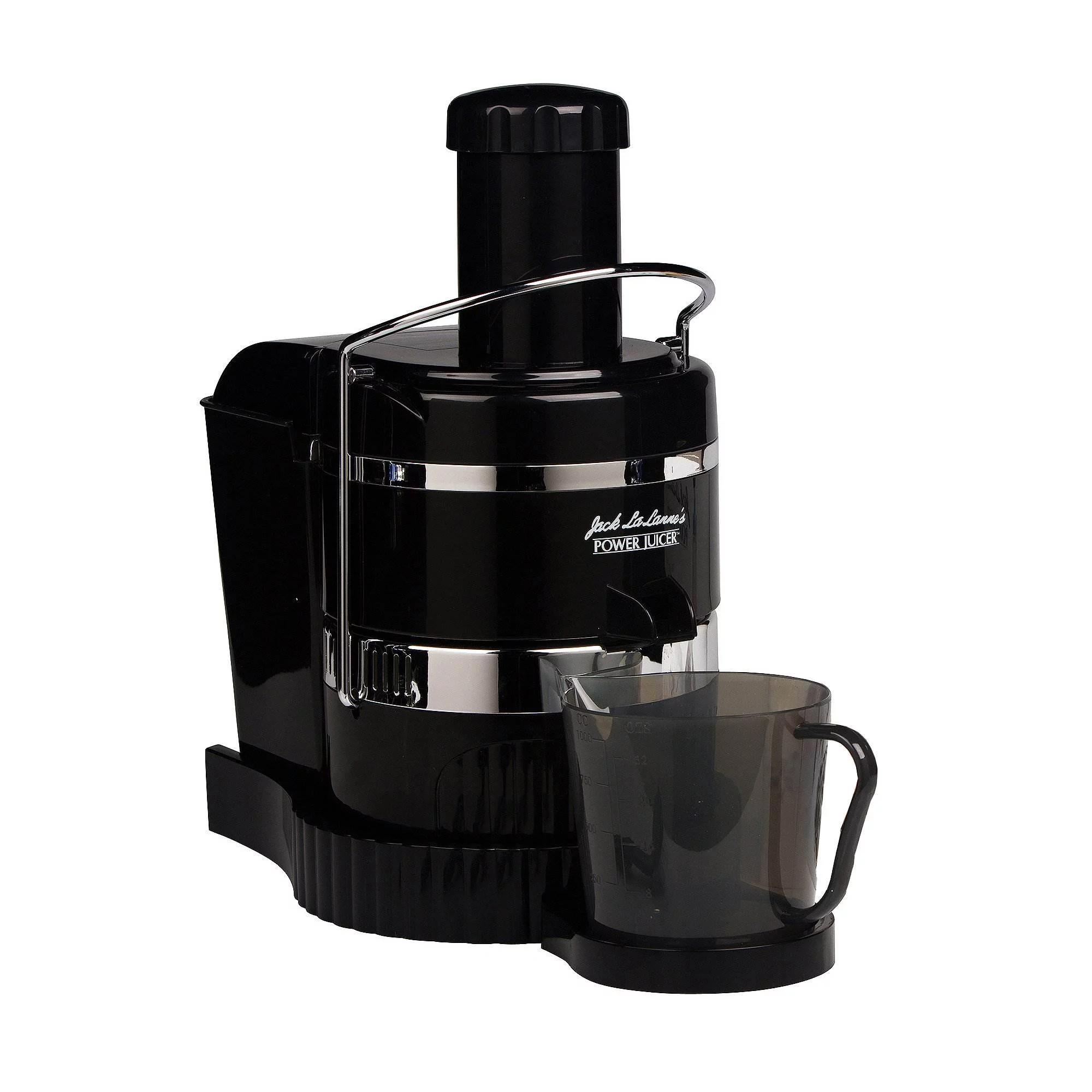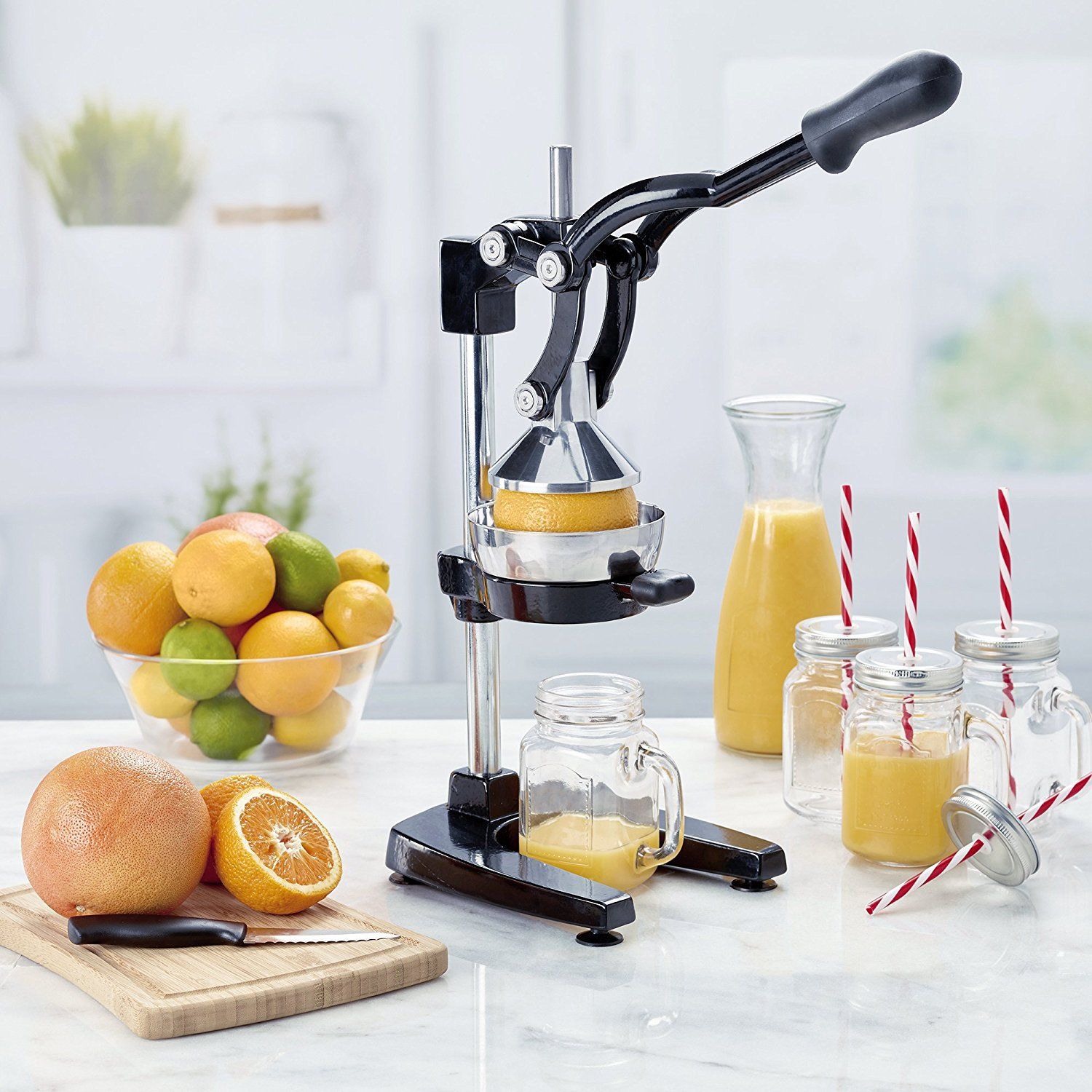

Articles
What Can I Put In A Juicer
Modified: February 21, 2024
Discover the best articles on what to put in a juicer and get the most out of your juicing experience. Explore a variety of juicing recipes and tips to kickstart a healthy lifestyle.
(Many of the links in this article redirect to a specific reviewed product. Your purchase of these products through affiliate links helps to generate commission for Storables.com, at no extra cost. Learn more)
Introduction
Juicing has become an increasingly popular trend in recent years, as people strive to lead healthier lifestyles and incorporate more nutritious foods into their diets. With the help of a juicer, individuals can extract the liquid goodness from various fruits, vegetables, and other ingredients to create delicious and refreshing juices. But what exactly can you put in a juicer? In this article, we will explore the wide range of options available and discover the endless possibilities for juicing.
So why is juicing so beneficial? One of the main advantages of juicing is that it allows you to consume a concentrated dose of vitamins, minerals, and antioxidants in an easily digestible form. By removing the fiber from fruits and vegetables, juicing enables your body to quickly absorb the nutrients and deliver them to where they are needed most. This can help to boost your immune system, detoxify your body, improve digestion, and increase energy levels.
There are several types of juicers on the market, each with its own unique features and functions. The most common types include centrifugal juicers, masticating juicers, and citrus juicers. Centrifugal juicers work by using a fast-spinning blade to extract the juice, while masticating juicers use a slower crushing and squeezing action. Citrus juicers, as the name suggests, are specifically designed for juicing citrus fruits such as oranges and lemons. Depending on your preferences and requirements, you can choose the juicer that best suits your needs.
Now, let’s delve into the various ingredients that you can put in a juicer. When it comes to juicing, the possibilities are virtually endless. You can experiment with a wide range of fruits, vegetables, leafy greens, herbs, spices, and even other ingredients such as nuts and seeds. By combining different ingredients, you can create your own unique juice blends that cater to your taste preferences and nutritional needs.
Key Takeaways:
- Juicing offers a multitude of benefits, from increased nutrient absorption to improved digestion and hydration. Experiment with a variety of fruits, vegetables, herbs, and spices to create delicious and nutritious homemade juices.
- Get creative with juicing by exploring unique combinations of fruits, vegetables, herbs, and spices. From Green Goddess Juice to Tropical Paradise, the possibilities are endless for crafting refreshing and health-boosting homemade juice blends.
Read more: What Can I Put In A Carpet Cleaner
Benefits of Juicing
Juicing offers a plethora of benefits for your overall health and well-being. Here are some of the key advantages of incorporating juicing into your daily routine:
- Nutrient-rich: When you juice fruits and vegetables, you extract their concentrated nutrients in liquid form. This allows your body to absorb those nutrients more efficiently than when consuming whole fruits and vegetables.
- Increased energy levels: Consuming fresh, nutrient-packed juices can provide a natural energy boost. The vitamins, minerals, and enzymes in the juice help to nourish your cells and support optimal energy production.
- Improved digestion: Juicing removes the fibrous pulp from fruits and vegetables, making it easier for your body to digest and absorb the nutrients. This can be particularly beneficial for individuals with digestive issues or sensitive stomachs.
- Detoxification: Juicing is a natural way to cleanse and detoxify your body. The antioxidant-rich juice helps to flush out toxins and support the liver and other detoxification organs, promoting overall detoxification and improved skin health.
- Weight management: Drinking fresh juices can aid in weight management by providing essential nutrients and hydration while being low in calories. Juices can help to satisfy hunger, control cravings, and support a balanced diet.
- Immune system support: Juices are packed with immune-boosting vitamins, minerals, and antioxidants that can strengthen your immune system and help fight off infections and diseases.
- Hydration: Many people struggle to drink enough water throughout the day, but juicing can help increase your fluid intake. Staying hydrated is crucial for maintaining overall health and promoting healthy bodily functions.
- Improved skin health: The high levels of antioxidants found in fresh juices can contribute to healthier, more radiant skin. Juices can help improve skin tone, reduce inflammation, and promote collagen production for a youthful complexion.
These are just a few of the many benefits that juicing can offer. Incorporating fresh, homemade juices into your everyday routine can have a remarkable impact on your overall health and well-being.
Types of Juicers
When it comes to juicing, there are several types of juicers available on the market. Each type has its own unique features and functions, catering to different preferences and needs. Here are the most common types of juicers:
- Centrifugal Juicers: These juicers are the most popular and widely available. They work by using a fast-spinning blade to extract juice from fruits and vegetables. Centrifugal juicers are known for their speed and convenience, as they can quickly produce fresh juice. However, they may not be as efficient in extracting maximum juice yield and preserving nutrients compared to other types of juicers.
- Masticating Juicers: Also known as slow juicers or cold press juicers, masticating juicers use a slower crushing and squeezing action to extract juice. They operate at a lower speed, which helps to minimize oxidation and preserve the enzymes and nutrients in the juice. Masticating juicers are known for their ability to extract a higher juice yield and produce juice with a longer shelf life. They are also capable of juicing leafy greens and wheatgrass effectively.
- Citrus Juicers: As the name suggests, citrus juicers are specifically designed for juicing citrus fruits such as oranges, lemons, and grapefruits. They typically feature a reamer that extracts juice from the fruits when pressed against them. Citrus juicers are simple to use and perfect for those who primarily juice citrus fruits.
- Twin Gear Juicers: Twin gear juicers, also known as triturating juicers, use two interlocking gears to crush and extract juice from fruits and vegetables. These juicers are known for their excellent juice yield and ability to handle a wide variety of produce, including leafy greens and tough vegetables. Twin gear juicers operate at a slower speed, which helps to maintain optimal nutrient content and juice quality.
- Vertical Juicers: Vertical juicers are a more compact and space-saving option. They feature a vertical design, with the ingredients being fed through a chute and pushed down by a spinning auger. This design allows for a continuous juicing process and easy cleanup. Vertical juicers are versatile and can handle a variety of fruits and vegetables.
It’s important to consider your juicing needs, budget, and the types of produce you plan to juice when selecting a juicer. Each type of juicer has its own advantages and limitations. Ultimately, the best juicer for you will depend on your personal preferences and requirements.
Fruits for Juicing
When it comes to juicing, fruits are a delicious and refreshing choice. They add natural sweetness, vibrant flavors, and a variety of nutrients to your juices. Here are some of the top fruits that are commonly juiced:
- Oranges: Oranges are a popular choice for juicing due to their high vitamin C content and naturally sweet taste. They provide a burst of freshness and tanginess to your juices.
- Apples: Apples are one of the most versatile fruits for juicing. They add natural sweetness and a touch of tartness to your juices. Apples also blend well with other ingredients and can enhance the flavor profile of your juice.
- Strawberries: Strawberries are a delicious and vibrant addition to any juice. They are rich in antioxidants and vitamin C, adding a refreshing and slightly tart flavor to your blends.
- Pineapples: Pineapples are known for their tropical sweetness and refreshing taste. They contain a digestive enzyme called bromelain and are rich in vitamins, making them a popular choice for juicing.
- Grapes: Grapes, whether red or green, are juicy and sweet fruits that are perfect for juicing. They contain antioxidants and other beneficial compounds that can support heart health and immunity.
- Watermelon: Watermelon is a hydrating fruit that is exceptionally refreshing when juiced. It has a high water content and a naturally sweet taste, making it a great choice for hot summer days.
- Blueberries: Blueberries are small but mighty when it comes to juicing. They are packed with antioxidants and have a sweet and slightly tart flavor that adds depth to your juices.
- Mangoes: Mangoes are another tropical favorite for juicing. They have a rich, sweet, and creamy flavor that pairs well with other fruits and adds a delightful twist to your juices.
These are just a few examples of the many fruits that you can juice. Feel free to experiment with different combinations and discover your favorite flavors. Remember to choose ripe and fresh fruits for the best taste and nutritional value in your juices.
Vegetables for Juicing
Vegetables are an essential component of juicing, as they provide a plethora of vitamins, minerals, and antioxidants. Incorporating vegetables into your juices not only boosts their nutritional value but also adds a savory and earthy flavor. Here are some top vegetables that are commonly juiced:
- Carrots: Carrots are a popular vegetable for juicing due to their vibrant orange color and natural sweetness. They are rich in beta-carotene, which converts to vitamin A in the body, supporting healthy vision and skin.
- Kale: Kale is a nutrient powerhouse that is packed with vitamins A, C, and K. It adds a mild, slightly bitter taste to your juices and is particularly beneficial for detoxification and immune support.
- Spinach: Spinach is another leafy green that is fantastic for juicing. It is loaded with iron, folate, and other nutrients, contributing to healthy blood circulation and overall vitality. Spinach has a mild taste that blends well with other ingredients.
- Cucumbers: Cucumbers have a high water content, making them incredibly hydrating when juiced. They add a refreshing and cooling element to your juices, along with a subtle flavor.
- Celery: Celery has a mild and refreshing taste that pairs well with other vegetables and fruits. It is an excellent source of vitamins, minerals, and antioxidants, while also providing hydration and supporting digestion.
- Beets: Beets are vibrant and nutrient-dense root vegetables that lend their rich color and earthy sweetness to your juices. They are known for their detoxifying properties and can help to support healthy blood pressure and liver function.
- Cabbage: Cabbage is a cruciferous vegetable that adds a mild and slightly peppery flavor to your juices. It is packed with nutrients and antioxidants, including vitamin C and fiber, promoting digestion and overall health.
- Tomatoes: Tomatoes are juicy and tangy vegetables that are wonderful for juicing. They are rich in lycopene, an antioxidant that has been linked to various health benefits, including heart health and cancer prevention.
These are just a few examples of the many vegetables that you can juice. Experiment with different combinations to find your preferred flavors and nutrient profiles. Remember to choose fresh and organic vegetables whenever possible to maximize the health benefits of your juices.
Read more: What Can I Put In My Foot Spa
Leafy Greens for Juicing
Leafy greens are nutritional powerhouses that are excellent additions to your juicing routine. They are packed with vitamins, minerals, and phytonutrients that support overall health and well-being. Adding leafy greens to your juices not only increases the nutrient density but also provides a fresh and vibrant taste. Here are some top leafy greens for juicing:
- Spinach: Spinach is a popular leafy green choice for juicing due to its mild taste and high nutrient content. It is rich in vitamins A, C, and K, as well as iron, calcium, and other essential minerals.
- Kale: Kale is a nutritional powerhouse that is packed with vitamins and minerals. It has a slightly bitter taste but blends well with other ingredients in juices. Kale is particularly high in vitamins A, C, and K, along with antioxidants.
- Swiss Chard: Swiss chard is a vibrant and flavorful leafy green that adds a unique twist to your juices. It is rich in vitamins A, C, and K, as well as potassium and magnesium.
- Romaine Lettuce: Romaine lettuce is a crisp and hydrating leafy green that is great for juicing. It has a mild taste and contains essential nutrients such as vitamin C, folate, and fiber.
- Arugula: Arugula is a peppery and slightly bitter leafy green that adds a distinct flavor to your juices. It is rich in vitamins A, C, and K, as well as minerals like calcium and iron.
- Collard Greens: Collard greens have a hearty and robust flavor that pairs well with stronger-tasting fruits and vegetables. They are a great source of vitamins A, C, and K, as well as fiber and calcium.
- Beet Greens: Beet greens are the leafy tops of beets and are often overlooked. They are packed with nutrients such as vitamins A, C, and K, and can be a wonderful addition to your juicing recipes.
- Parsley: While commonly used as a garnish, parsley is also an excellent leafy green for juicing. It has a fresh and vibrant taste and is rich in vitamins A, C, and K, as well as antioxidants.
These leafy greens provide a wide array of health benefits when incorporated into your juice blends. Experiment with different combinations and quantities to find the flavors and nutrient profiles that you enjoy the most. Remember to wash leafy greens thoroughly before juicing to remove any dirt or pesticides.
When using a juicer, it’s important to include a variety of fruits and vegetables to ensure a balanced and nutritious juice. Some popular options include apples, carrots, kale, spinach, and ginger. Be sure to also include a source of liquid, such as water or coconut water, to help the juicer properly extract the juice.
Herbs for Juicing
Herbs are not only flavorful additions to your culinary creations, but they can also be fantastic ingredients for juicing. Herbs provide a unique and aromatic twist to your juices, along with a variety of health benefits. Here are some popular herbs that can be juiced:
- Mint: Mint is a refreshing herb with a cool and invigorating flavor. It adds a delightful burst of freshness to your juices. Mint is also known for its soothing properties and can aid in digestion.
- Basil: Basil is a versatile herb with a sweet and slightly peppery taste. It pairs well with both sweet and savory ingredients, and adds a unique flavor profile to your juices. Basil is also rich in antioxidants and has anti-inflammatory properties.
- Cilantro: Cilantro, also known as coriander, has a distinct and citrusy taste. It adds a zesty and aromatic element to your juices. Cilantro is often used for its detoxifying properties and can help to remove heavy metals from the body.
- Parsley: Parsley is a vibrant herb that is commonly used as a garnish, but it can also be juiced for its health benefits. It has a fresh and slightly peppery taste and is rich in vitamins A, C, and K, as well as antioxidants.
- Dill: Dill has a unique and tangy flavor that pairs well with cucumbers and other vegetables. It adds a refreshing and aromatic twist to your juices. Dill is also known for its digestive properties and can help alleviate bloating and indigestion.
- Lemon Balm: Lemon balm has a lemony scent and a mild, citrusy taste. It adds a bright and uplifting flavor to your juices. Lemon balm is often used for its calming properties and can help reduce stress and promote relaxation.
- Rosemary: Rosemary has a distinctive pine-like aroma and a robust flavor. It adds depth and complexity to your juices. Rosemary is also known for its antioxidant properties and can support brain health.
- Ginger: While not strictly an herb, ginger is a root that is commonly used in juicing. It has a spicy and warming flavor that adds a kick to your juices. Ginger is well-known for its anti-inflammatory properties and can aid digestion.
These herbs can be used in moderation to enhance the flavor and health benefits of your juices. Experiment with different combinations to discover your favorite herbal concoctions. Remember to start with small amounts and adjust according to your taste preferences.
Spices for Juicing
Spices are not only reserved for cooking and baking; they can also be wonderful additions to your juicing routine. Adding spices to your juices can enhance the flavors and provide an array of health benefits. Here are some popular spices that can be juiced:
- Turmeric: Turmeric is a golden spice with a warm and earthy flavor. It contains a compound called curcumin, which has powerful anti-inflammatory and antioxidant properties. Adding a small amount of turmeric to your juices can provide a multitude of health benefits.
- Cinnamon: Cinnamon is a sweet and aromatic spice that adds warmth and depth to your juices. It is loaded with antioxidants and has been shown to help regulate blood sugar levels and support heart health.
- Ginger: Ginger is a versatile spice that adds a zesty and warming flavor to your juices. It is known for its anti-inflammatory properties and can aid digestion and alleviate nausea. Ginger adds a pleasant kick to your juice blends.
- Cayenne Pepper: Cayenne pepper is a fiery spice that can add a bold and spicy kick to your juices. It contains capsaicin, which has been shown to have metabolism-boosting effects and may aid in weight management.
- Cloves: Cloves have a strong and aromatic flavor that adds depth to your juices. They are rich in antioxidants and have antimicrobial properties. Cloves can also help soothe digestive issues and freshen breath.
- Nutmeg: Nutmeg has a warm and nutty flavor that pairs well with a variety of ingredients. It adds a comforting and cozy touch to your juices. Nutmeg is also known for its anti-inflammatory properties and may support digestion.
- Cardamom: Cardamom has a unique and spicy-sweet flavor that can enhance the taste of your juices. It is often used to aid digestion and freshen breath. Cardamom also contains antioxidants that promote overall health.
- Allspice: Allspice has a warm and slightly sweet flavor reminiscent of a blend of cinnamon, cloves, and nutmeg. It adds complexity and depth to your juices. Allspice is also rich in antioxidants and may have anti-inflammatory properties.
When using spices in your juices, start with small amounts and gradually increase to your desired taste. Spices can be potent, so it’s important to find the right balance. Experiment with different combinations to create unique flavor profiles and enjoy the added health benefits that spices bring to your juices.
Other Ingredients for Juicing
While fruits, vegetables, herbs, and spices are the main ingredients used in juicing, there are other additional ingredients that you can incorporate to enhance the flavors and nutritional value of your juices. These ingredients add unique elements, such as creaminess, protein, or healthy fats. Here are some other ingredients commonly used in juicing:
- Coconut Water: Coconut water is a refreshing and hydrating ingredient that can be used as the base for your juices. It provides natural electrolytes and essential minerals, making it a great choice for replenishing fluids after a workout.
- Coconut Milk: Coconut milk adds a creamy and indulgent texture to your juices. It not only enhances the taste but also provides healthy fats, helping to increase satiety and absorb fat-soluble vitamins.
- Almond Milk: Almond milk is a popular dairy-free milk alternative that can add a smooth and nutty flavor to your juices. It is low in calories and rich in vitamin E and calcium.
- Chia Seeds: Chia seeds are a fantastic source of omega-3 fatty acids, fiber, and antioxidants. When soaked in liquid, chia seeds form a gel-like consistency, adding thickness and a nutritional boost to your juices.
- Flaxseeds: Flaxseeds are rich in omega-3 fatty acids and fiber. They can be ground and added to your juices to provide additional nutrients and a subtle nutty taste. Flaxseeds also contain lignans, which have antioxidant properties.
- Protein Powder: Adding a scoop of protein powder to your juices can boost their protein content and help with muscle recovery and satiety. Choose a high-quality protein powder that suits your dietary preferences, such as whey, plant-based, or collagen protein.
- Avocado: Avocado is a creamy and nutrient-dense fruit that adds richness and healthy fats to your juices. It also provides a silky smooth texture and enhances the absorption of fat-soluble vitamins.
- Yogurt: Yogurt adds creaminess and a tangy taste to your juices. It is a good source of protein and probiotics, which promote gut health. Choose plain or Greek yogurt for optimal health benefits.
- Bee Pollen: Bee pollen is a natural superfood that packs a nutritional punch. It is rich in vitamins, minerals, enzymes, and antioxidants. Adding a sprinkle of bee pollen to your juices can provide a boost of energy and immune support.
- Lemon or Lime Juice: Adding a squeeze of lemon or lime juice can brighten the flavors of your juices and provide a tangy and refreshing zing. Lemon and lime juice are also rich in vitamin C, which supports immune health.
These additional ingredients allow you to customize your juices according to your taste preferences and nutritional goals. Experiment with different combinations and discover the wonderful depth of flavors and health benefits that these ingredients can bring to your juicing journey.
Read more: Where Can I Buy A Nama Juicer
Homemade Juice Recipes
Now that you have a better understanding of the various ingredients that can be used in juicing, let’s explore some delicious homemade juice recipes to try. Feel free to adjust the ingredient quantities according to your taste preferences and experiment with different combinations to create your own unique flavors. Here are a few recipes to get you started:
- Green Goddess Juice:
- 2 cucumbers
- 2 handfuls of spinach
- 1 green apple
- 1 stalk of celery
- ¼ lemon
- A small piece of ginger
- Sunrise Delight:
- 2 oranges
- 2 carrots
- 1 golden beet
- 1 inch of turmeric root
- A pinch of black pepper (to enhance turmeric absorption)
- Berry Blast:
- 1 cup of strawberries
- 1 cup of blueberries
- 1 handful of spinach
- 1 tablespoon of chia seeds
- A squeeze of lemon juice
- Tropical Paradise:
- 1 cup of pineapple chunks
- 1 ripe mango
- 1 small cucumber
- A handful of baby spinach
- A squeeze of lime juice
Run all the ingredients through your juicer and enjoy the refreshing and nutrient-packed Green Goddess Juice. This recipe is loaded with hydrating cucumber, leafy greens, and a touch of zing from lemon and ginger.
This vibrant juice recipe combines the sweetness of oranges, the earthy flavors of carrots and beets, and the anti-inflammatory benefits of turmeric. It’s a delightful blend to start your day on a refreshing note.
Blend all the ingredients together in a high-speed blender or run them through your juicer. This berry-packed juice is rich in antioxidants, fiber, and essential nutrients, making it a perfect choice for a healthy and refreshing snack.
Enjoy a taste of the tropics with this tropical paradise juice. Pineapple and mango add a tropical sweetness, while cucumber and spinach provide hydration and nutrients. The hint of lime adds a refreshing twist to this delightful concoction.
These homemade juice recipes are just a starting point for your juicing adventures. Get creative, experiment with different combinations, and tailor the recipes to suit your preferences. The possibilities are endless, and juicing allows you to explore a myriad of flavors while reaping the health benefits of fresh, homemade juices.
Remember, it’s always a good idea to consult with a healthcare professional or nutritionist to ensure that any specific dietary requirements or health concerns are taken into consideration.
Conclusion
Juicing is a wonderful way to incorporate a variety of fruits, vegetables, herbs, and spices into your diet, providing a concentrated dose of nutrients in a refreshing and delicious form. By investing in a reliable juicer and exploring the wide range of ingredients available, you can create your own unique juice blends that suit your taste preferences and nutritional needs.
Throughout this article, we have discussed the numerous benefits of juicing, including increased nutrient intake, improved digestion, detoxification, weight management, immune support, hydration, and enhanced skin health. We have also explored different types of juicers to help you choose the right one for your needs.
From fruits like oranges, apples, and strawberries to vegetables like carrots, kale, and cucumbers, there are endless possibilities for juicing. Leafy greens such as spinach and herbs like mint and basil can also add a refreshing twist to your juices. Don’t forget the power of spices like turmeric, cinnamon, and ginger, which can enhance both the flavors and health benefits of your juices.
In addition to the main ingredients, you can also experiment with other additions such as coconut water, chia seeds, almond milk, and yogurt to further elevate the taste and nutritional value of your juices.
To get you started on your juicing journey, we have provided a selection of homemade juice recipes for you to try. However, don’t be afraid to customize these recipes or create your own unique combinations to suit your preferences and dietary needs.
Remember, juicing is not a replacement for a balanced diet, but rather a supplement that can help boost your nutrient intake and add variety to your meals. It’s always a good idea to incorporate whole fruits and vegetables into your diet as well, to ensure you’re getting the benefits of fiber.
So, grab your favorite fruits, vegetables, and other ingredients, and get juicing! Explore different flavors, experiment with quantities, and enjoy the plethora of health benefits that come with each glass of homemade juice. Cheers to a healthier and more vibrant you!
Frequently Asked Questions about What Can I Put In A Juicer
Was this page helpful?
At Storables.com, we guarantee accurate and reliable information. Our content, validated by Expert Board Contributors, is crafted following stringent Editorial Policies. We're committed to providing you with well-researched, expert-backed insights for all your informational needs.














0 thoughts on “What Can I Put In A Juicer”